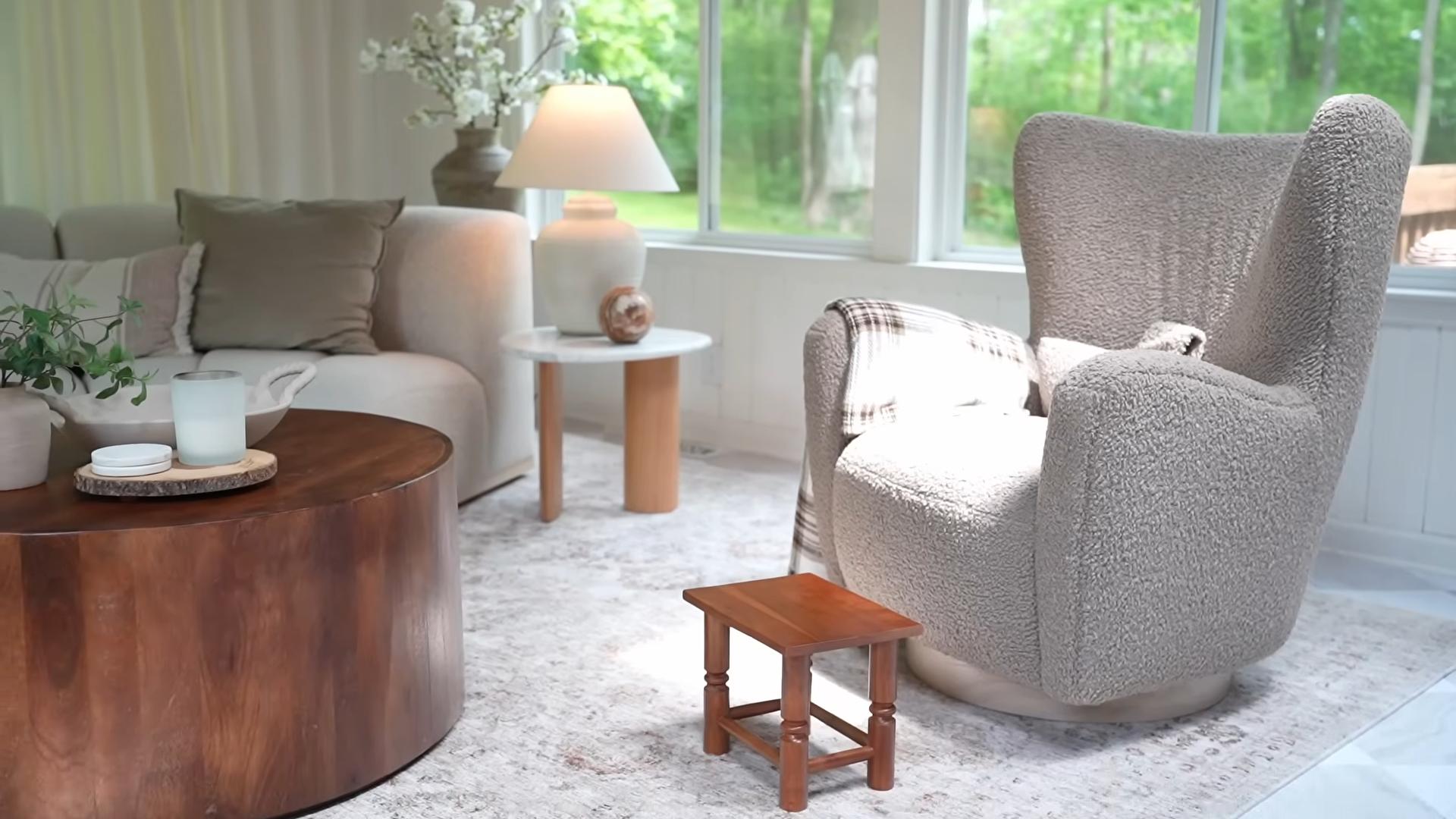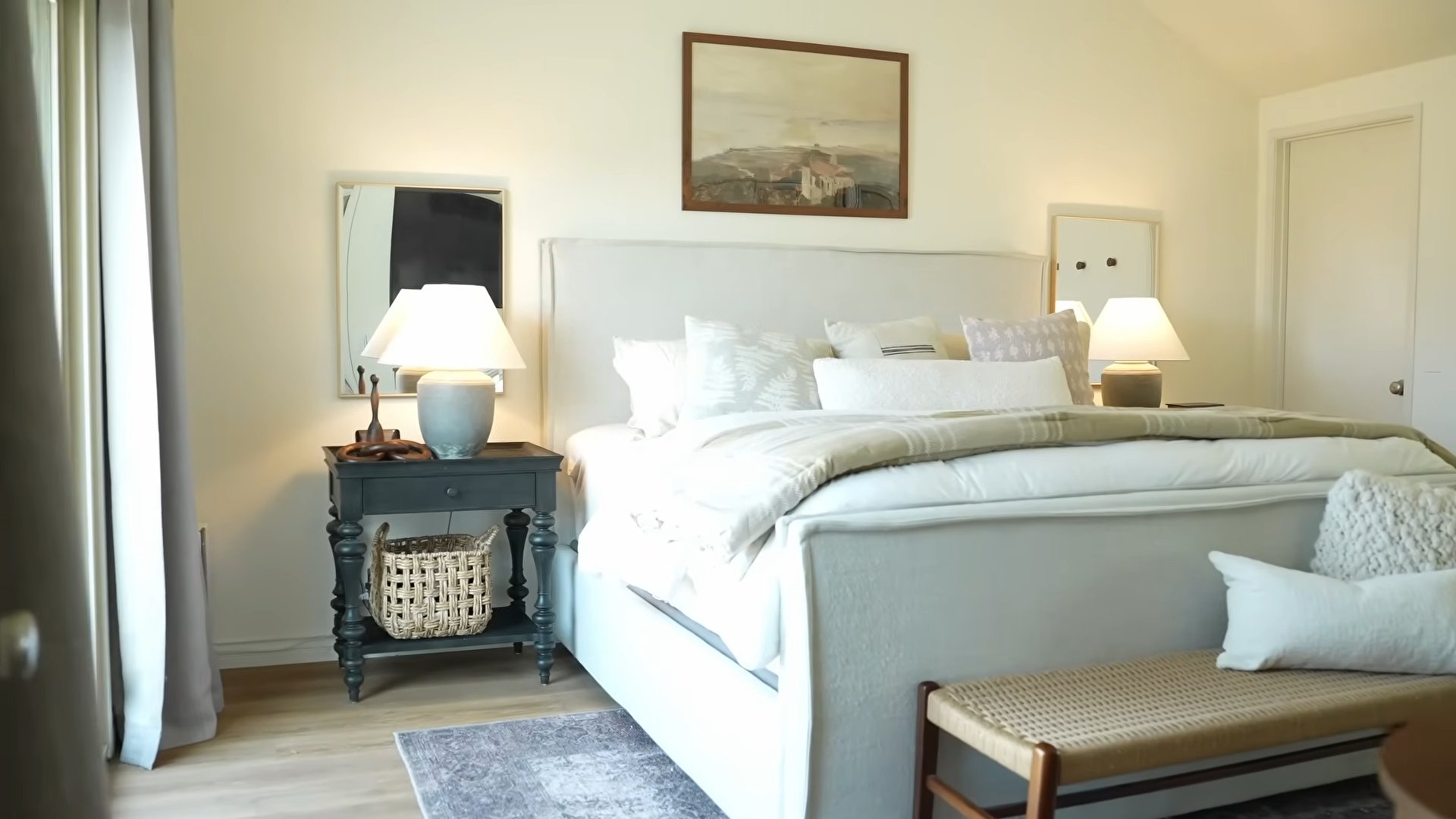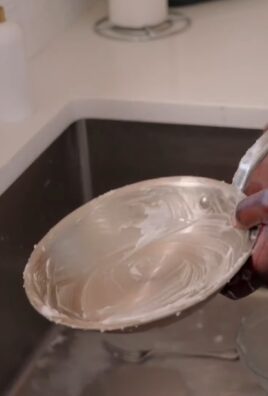Keep Home Fresh and Clean – isn’t that the dream? We all crave that feeling of walking into a home that smells divine and sparkles with cleanliness. But let’s be honest, maintaining that level of freshness can feel like a never-ending battle, especially with busy schedules and, well, life happening!
For centuries, cultures around the world have developed ingenious methods for keeping their homes fresh and clean, often relying on natural ingredients and clever DIY solutions. Think of ancient Egyptians using essential oils for aromatherapy and cleaning, or the Victorian era’s obsession with homemade cleaning concoctions. These traditions highlight a timeless desire for a healthy and inviting living space.
That’s why I’m so excited to share these simple yet effective DIY tricks and hacks that will help you keep home fresh and clean without breaking the bank or spending hours scrubbing. From natural air fresheners to easy cleaning solutions, these tips are designed to fit seamlessly into your daily routine. You’ll learn how to banish odors, tackle tough stains, and create a welcoming atmosphere that you and your loved ones will adore. Ready to transform your home into a haven of freshness? Let’s get started!

DIY Home Refresh: Simple Hacks for a Sparkling Clean Space
Okay, let’s face it, keeping a home fresh and clean can feel like a never-ending battle. But don’t worry! I’m here to share some of my favorite DIY hacks that will make your space sparkle without breaking the bank or spending all your free time scrubbing. These are tried-and-true methods I use myself, and I promise they’ll make a difference.
Hack 1: The Magic of Baking Soda and Vinegar
This dynamic duo is a powerhouse for cleaning and deodorizing. It’s natural, effective, and super affordable.
- Why it works: Baking soda is a mild alkali that can dissolve dirt and grease. Vinegar is a mild acid that helps to disinfect and remove hard water stains. When combined, they create a fizzing action that helps to loosen grime.
- Best for: Cleaning drains, removing mildew, deodorizing carpets, and cleaning ovens.
Step-by-Step Drain Cleaning
1. Pour Baking Soda: Start by pouring about 1 cup of baking soda down the drain. Try to get as much of it down the drain as possible.
2. Add Vinegar: Next, slowly pour 1 cup of white vinegar down the drain. You’ll hear the fizzing action start immediately.
3. Let it Fizz: Let the mixture fizz and bubble for at least 30 minutes, or even better, overnight. This allows the baking soda and vinegar to break down the buildup in the drain.
4. Flush with Hot Water: After the waiting period, flush the drain with hot water for several minutes. This will help to clear away the loosened debris.
5. Repeat if Necessary: If the drain is still slow, repeat the process. For really stubborn clogs, you might need to use a plunger after the baking soda and vinegar treatment.
Mildew Removal in the Bathroom
1. Create a Paste: Mix baking soda with enough water to form a thick paste. The consistency should be similar to toothpaste.
2. Apply to Mildew: Apply the paste to the mildewed areas, such as grout lines in the shower or around the sink.
3. Let it Sit: Allow the paste to sit for at least 15-20 minutes. This gives the baking soda time to penetrate the mildew.
4. Scrub Gently: Use a scrub brush or an old toothbrush to gently scrub the mildewed areas.
5. Rinse Thoroughly: Rinse the area thoroughly with water.
6. Vinegar Rinse (Optional): For extra cleaning power, you can follow up with a spray of white vinegar. Let it sit for a few minutes, then rinse again.
Deodorizing Carpets
1. Sprinkle Baking Soda: Generously sprinkle baking soda over the entire carpet. Don’t be shy!
2. Let it Sit: Allow the baking soda to sit on the carpet for at least a few hours, or even overnight. This will allow it to absorb odors.
3. Vacuum Thoroughly: Vacuum the carpet thoroughly to remove all the baking soda. Make sure to go over the area multiple times to ensure you get everything up.
Oven Cleaning Made Easy
1. Remove Racks: Remove the oven racks and set them aside.
2. Baking Soda Paste: Make a paste of baking soda and water.
3. Coat the Oven: Coat the entire inside of the oven with the baking soda paste, avoiding the heating elements.
4. Let it Sit Overnight: Let the paste sit overnight. This will loosen the baked-on grime.
5. Wipe Clean: The next day, wipe the oven clean with a damp cloth. You may need to use a scraper for stubborn spots.
6. Vinegar Spray: Spray the inside of the oven with white vinegar. This will react with any remaining baking soda and help to loosen any remaining grime.
7. Final Wipe Down: Wipe the oven clean one last time.
8. Clean the Racks: Soak the oven racks in hot, soapy water. Scrub them clean and rinse thoroughly.
Hack 2: Lemon Power for a Fresh Scent and Clean Surfaces
Lemons aren’t just for lemonade! Their natural acidity makes them a fantastic cleaning agent and deodorizer. Plus, they leave behind a lovely, fresh scent.
- Why it works: Lemon juice contains citric acid, which is a natural disinfectant and degreaser. It also has a refreshing scent that can help to eliminate odors.
- Best for: Cleaning cutting boards, polishing furniture, cleaning microwaves, and deodorizing garbage disposals.
Cleaning and Deodorizing Cutting Boards
1. Cut a Lemon: Cut a lemon in half.
2. Rub the Lemon: Rub the cut side of the lemon all over the cutting board, paying special attention to any stained or smelly areas.
3. Let it Sit: Let the lemon juice sit on the cutting board for about 10 minutes.
4. Rinse Thoroughly: Rinse the cutting board thoroughly with water.
5. Dry Completely: Dry the cutting board completely.
Polishing Furniture
1. Mix Lemon Juice and Olive Oil: Mix equal parts lemon juice and olive oil in a spray bottle.
2. Spray Lightly: Lightly spray the mixture onto a soft cloth.
3. Wipe Furniture: Wipe the furniture with the cloth, following the grain of the wood.
4. Buff to Shine: Buff the furniture with a clean, dry cloth to bring out the shine.
Microwave Cleaning in Minutes
1. Lemon Water: Fill a microwave-safe bowl with 1 cup of water and add the juice of one lemon (or a few lemon slices).
2. Microwave for a Few Minutes: Microwave the mixture on high for 3-5 minutes, or until the water boils and the microwave is filled with steam.
3. Let it Sit: Let the bowl sit in the microwave for 5-10 minutes. The steam will loosen any splattered food.
4. Wipe Clean: Carefully remove the bowl and wipe the inside of the microwave clean with a damp cloth.
Deodorizing Garbage Disposals
1. Cut Lemon into Pieces: Cut a lemon into small pieces.
2. Drop into Disposal: Drop the lemon pieces into the garbage disposal.
3. Run Disposal: Run the garbage disposal with cold water for about 30 seconds. The lemon pieces will help to clean and deodorize the disposal.
Hack 3: Essential Oils for a Natural Clean and Fragrance
Essential oils aren’t just for aromatherapy! Many have antibacterial and antifungal properties, making them great additions to your cleaning routine.
- Why it works: Certain essential oils, like tea tree, lavender, and eucalyptus, have natural antibacterial and antifungal properties. They can also add a pleasant scent to your home.
- Best for: Making all-purpose cleaners, disinfecting surfaces, and freshening up laundry.
DIY All-Purpose Cleaner
1. Gather Ingredients: You’ll need a spray bottle, water, white vinegar, and your favorite essential oils (I like tea tree, lavender, and lemon).
2. Combine Ingredients: Fill the spray bottle with equal parts water and white vinegar.
3. Add Essential Oils: Add about 10-20 drops of essential oils.
4. Shake Well: Shake the bottle well to combine the ingredients.
5. Use as Needed: Spray the cleaner onto surfaces and wipe clean with a cloth.
Disinfecting Surfaces
1. Choose Your Oil: Select an essential oil with antibacterial properties, such as tea tree, eucalyptus, or thyme.
2. Add to Water: Add a few drops of the essential oil to a bucket of water.
3. Wipe Surfaces: Use the mixture to wipe down surfaces, such as countertops, doorknobs, and light switches.
Freshening Up Laundry
1. Add to Washing Machine: Add a few drops of your favorite essential oil (lavender, lemon, or eucalyptus are great choices) to the washing machine during the rinse cycle.
2. Scented Dryer Balls: Alternatively, you can add a few drops of essential oil to wool dryer balls and toss them in the dryer with your clothes.
Hack 4: Cleaning with Borax
Borax, also known as sodium borate, is a naturally occurring mineral with powerful cleaning and deodorizing properties. It’s a great alternative to harsh chemical cleaners.
- Why it works: Borax is a natural mineral that acts as a water softener, cleaner, disinfectant, and deodorizer.
- Best for: Laundry boosting,

Conclusion
So, there you have it! This simple yet incredibly effective DIY trick to keep your home fresh and clean is more than just a cleaning hack; it’s a lifestyle upgrade. We’ve explored how readily available ingredients can be transformed into a powerful odor eliminator and air freshener, saving you money and reducing your reliance on potentially harmful chemicals found in commercial products.
But why is this a must-try? Beyond the cost savings and eco-friendliness, this DIY solution offers unparalleled customization. You’re in complete control of the scent profile, allowing you to tailor it to your personal preferences and the specific needs of each room in your home. Tired of artificial lavender? Opt for a zesty citrus blend. Need something calming for the bedroom? Try a few drops of chamomile or sandalwood essential oil. The possibilities are truly endless.
And the benefits extend beyond just a pleasant aroma. A clean-smelling home contributes significantly to your overall well-being. It creates a more inviting and relaxing atmosphere, reduces stress, and can even improve your mood. Imagine walking into your home after a long day and being greeted by a refreshing and natural scent – a far cry from the overpowering and often synthetic fragrances of store-bought air fresheners.
Looking for variations? Consider adding a tablespoon of baking soda to your mixture for extra odor absorption. Experiment with different essential oil combinations to create unique and personalized scents. For a longer-lasting effect, try soaking cotton balls in the solution and placing them in discreet locations around your home, such as inside closets or behind furniture. You can even use this solution to freshen up your car! Simply spray it lightly onto the floor mats and upholstery (always test in an inconspicuous area first).
This DIY trick is not just about cleaning; it’s about creating a healthier, happier, and more personalized living space. It’s about taking control of your environment and making choices that are both good for you and good for the planet.
We wholeheartedly encourage you to give this DIY trick a try. It’s simple, affordable, and incredibly rewarding. Once you experience the difference a naturally fresh and clean home can make, you’ll never go back to commercial air fresheners again.
But don’t just take our word for it! We want to hear about your experiences. What scent combinations did you try? Did you discover any other creative uses for this DIY solution? Share your tips, tricks, and feedback in the comments below. Let’s build a community of like-minded individuals who are passionate about creating healthy and happy homes. Your insights could inspire others to embrace this simple yet transformative DIY trick and experience the joy of a naturally fresh and clean home. Let us know how you keep your home fresh and clean using this method!
Frequently Asked Questions
What exactly is this DIY trick and what does it involve?
This DIY trick involves creating a homemade air freshener and odor eliminator using readily available ingredients like water, vinegar (optional), and essential oils. It’s a simple process of combining these ingredients in a spray bottle and using it to freshen up your home. The beauty of this method lies in its customizability and eco-friendliness, allowing you to control the scents and avoid harsh chemicals found in commercial air fresheners. It’s a cost-effective way to keep your home fresh and clean.
What are the benefits of using a DIY air freshener compared to store-bought ones?
There are numerous benefits to using a DIY air freshener. Firstly, you have complete control over the ingredients, ensuring you’re not exposing yourself or your family to potentially harmful chemicals, allergens, or synthetic fragrances. Secondly, it’s significantly more cost-effective, as you’re using inexpensive ingredients you likely already have at home. Thirdly, it’s environmentally friendly, reducing your reliance on plastic packaging and chemical-laden products. Finally, you can customize the scent to your exact preferences, creating a truly personalized aroma for your home.
What ingredients do I need for this DIY trick?
The basic ingredients you’ll need are:
* Water (distilled water is preferred for a longer shelf life)
* White vinegar (optional, for extra odor-eliminating power)
* Essential oils (choose your favorite scents)
* A spray bottleYou can also add baking soda for extra odor absorption or witch hazel as a preservative.
What essential oils are best to use for a fresh and clean scent?
The best essential oils for a fresh and clean scent are subjective and depend on your personal preferences. However, some popular choices include:
* Lemon: Uplifting and energizing, with a bright citrus scent.
* Lavender: Calming and relaxing, with a floral and herbaceous aroma.
* Eucalyptus: Refreshing and invigorating, with a medicinal and slightly camphorous scent.
* Peppermint: Cooling and stimulating, with a minty and refreshing aroma.
* Tea Tree: Cleansing and purifying, with a medicinal and slightly earthy scent.
* Orange: Cheerful and uplifting, with a sweet and citrusy aroma.
* Grapefruit: Tangy and refreshing, with a bright and citrusy aroma.
* Pine: Woodsy and grounding, reminiscent of a forest.Experiment with different combinations to find your perfect blend!
How do I make the DIY air freshener?
The process is very simple:
1. Fill a spray bottle with distilled water.
2. Add a tablespoon of white vinegar (optional).
3. Add 10-20 drops of your chosen essential oils.
4. Close the spray bottle and shake well to combine.Remember to shake the bottle before each use, as the essential oils may separate from the water.
How often should I use the DIY air freshener?
You can use the DIY air freshener as often as needed to maintain a fresh and clean scent in your home. It’s particularly effective after cooking, cleaning, or when you simply want to freshen up a room.
Will the vinegar smell linger?
The vinegar smell will dissipate quickly, especially once the essential oils are sprayed. The vinegar acts as a natural odor neutralizer and helps the essential oils disperse more effectively. If you’re concerned about the vinegar smell, you can start with a smaller amount or omit it altogether.
Can I use this DIY air freshener on fabrics?
It’s generally safe to use this DIY air freshener on fabrics, but it’s always a good idea to test it in an inconspicuous area first to ensure it doesn’t stain or discolor the material. Avoid spraying it directly onto delicate fabrics like silk or leather.
How long will the DIY air freshener last?
The shelf life of the DIY air freshener depends on the ingredients used. Using distilled water and adding a preservative like witch hazel can help extend its shelf life. Generally, it should last for several weeks to a few months. If you notice any changes in color, odor, or consistency, it’s best to discard it and make a fresh batch.
Is this DIY trick safe for pets and children?
While essential oils are natural, some can be harmful to pets and children if ingested or used improperly. It’s important to research the safety of each essential oil before using it around pets and children. Avoid using essential oils that are known to be toxic to pets, such as tea tree oil, pennyroyal, and wintergreen. Always dilute essential oils properly and keep them out of reach of children and pets. If you have any concerns, consult with a veterinarian or healthcare professional.
Can I use this DIY trick to eliminate strong odors like pet odors or smoke?
Yes, this DIY trick can be effective in eliminating strong odors. For pet odors, consider using essential oils like lavender, chamomile, or cedarwood. For smoke odors, try using essential oils like eucalyptus, tea tree, or lemon. Adding baking soda to the mixture can also help absorb odors. You may need to spray more frequently or use a stronger concentration of essential oils to combat particularly stubborn odors.
What are some other ways to keep my home fresh and clean naturally?
Besides using this DIY air freshener, there are many other ways to keep your home fresh and clean naturally:
* Open windows regularly to ventilate your home.
* Use natural cleaning products like vinegar, baking soda, and lemon juice.
* Wash your bedding and towels frequently.
* Clean up spills and messes immediately.
* Use an air purifier to remove allergens and pollutants.
* Keep indoor plants to help purify the air.
* Declutter regularly to reduce dust and allergens.
* Vacuum and mop your floors regularly.
* Use natural odor absorbers like baking soda or activated charcoal.





Leave a Comment